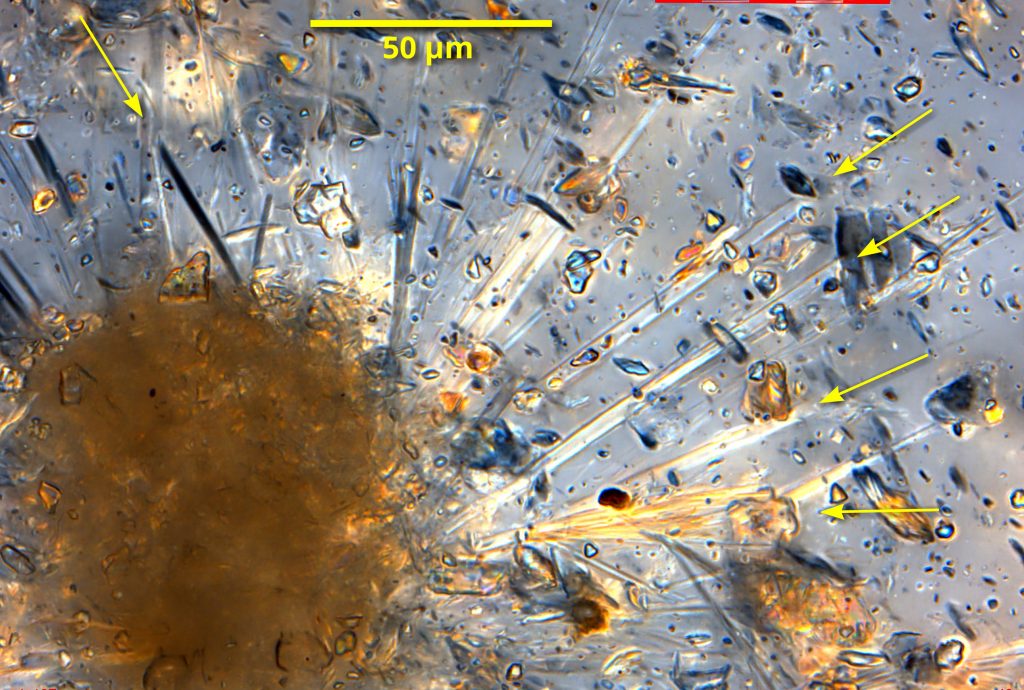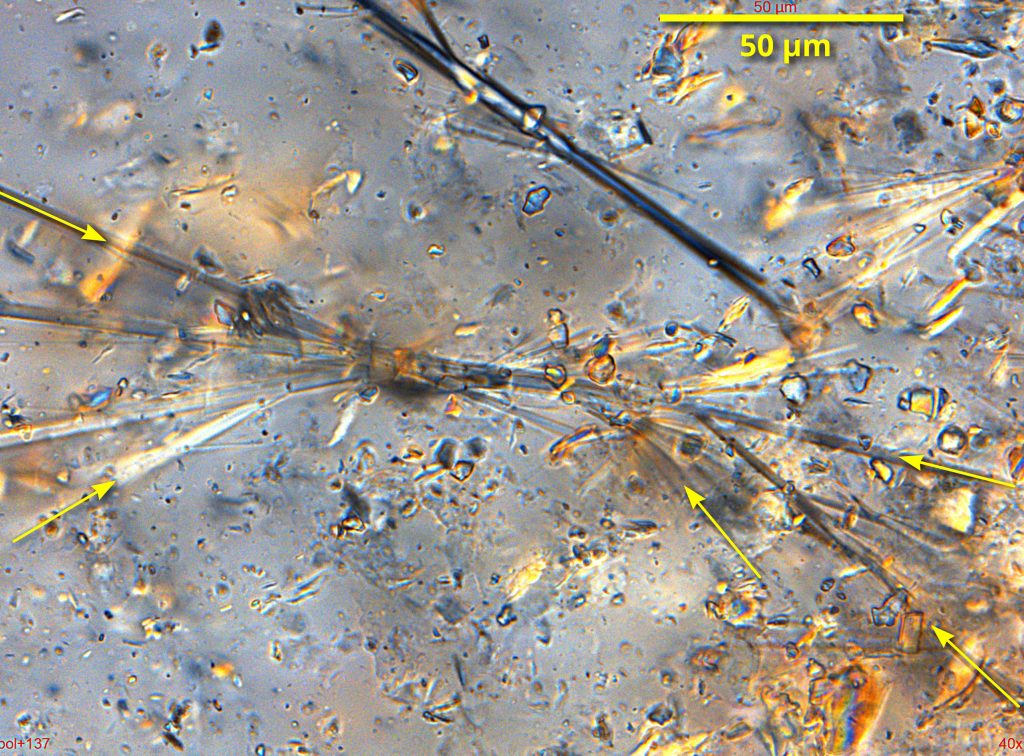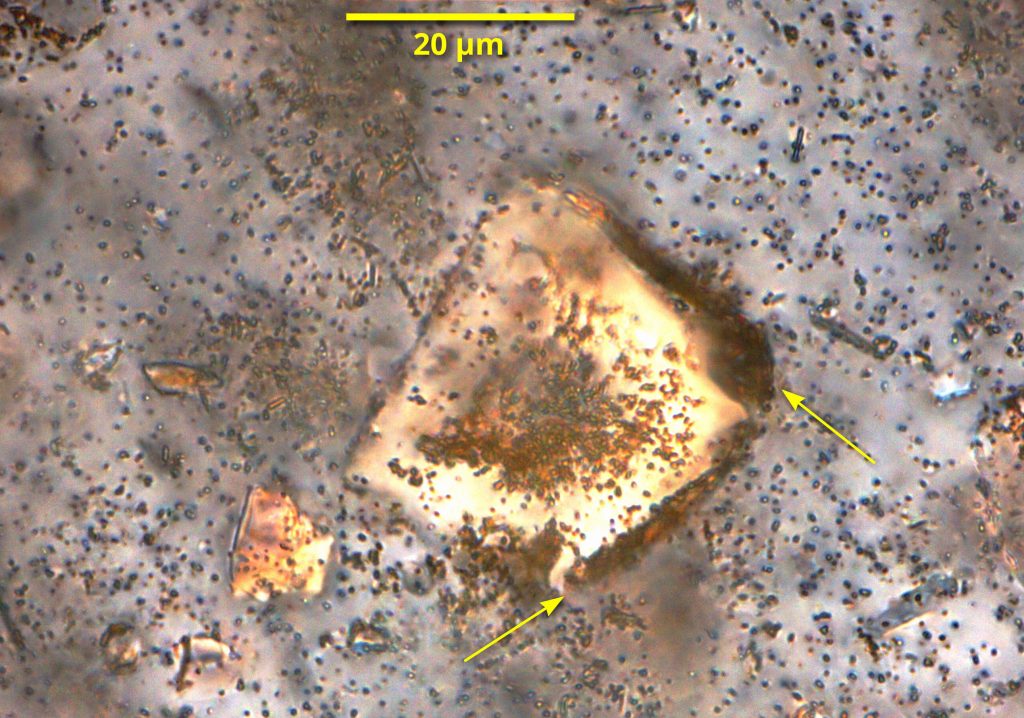
The pictures shown here (Figures 1 and 2) come from a study in which we conducted on twelve commercial baby powders and cosmetic formulations available in the shops in Jakarta, Indonesia (March-May 2020). Our initial intention was to analyze the particle size distribution (PSD) of common household articles with a polarizing light microscope for a reference database.
As expected all twelve analyzed powders contained talc, not a surprise, it was listed on the packages as a main ingredient. But there was a problem: One powder contained asbestos!
Talc is a naturally occurring mineral and in its powdered form, it is usually combined with starch (which we also found in many samples) and used as baby powder or in cosmetics. Talc is used for many other purposes such as a food additive, in paper manufacturing or on rubber materials to prevent them from sticking together. The problem, is that talc can be contaminated with asbestos fibers because the two minerals, talc and asbestos (which encompasses a group of similar minerals), occur naturally together (further reading here). While the health aspects of talc are still being discussed controversially, it has long been established, (first by Cooke, 1924) that asbestos constitutes a serious health risk. When inhaled it is highly toxic and carcinogenic. Over time it leads to mesothelioma, a nasty malignant tumor, which is caused by the asbestos fibers in the lungs, abdomen or even the heart. The life expectancy for most mesothelioma patients is only 12 months after diagnosis.
The use of asbestos is not (yet?) illegal in Indonesia (nor in China, where most of it comes from) and fiber-cement with asbestos (brand name: Eternit) for roofs, partitions and other purposes is very common.

Back to the particle sizes: Another finding of our study was the presence of plastic microbeads, a form of microplastics, in six of the twelve cosmetic samples. The size of the beads observed, in Figure 3, is about one micron (1μm). Such beads are usually added as an exfoliating agent to cosmetics and personal care products, such as soap, facial scrub and toothpaste. However, microbeads cannot be filtered out and make their way through the sewage system and – eventually – end up in rivers, lakes or the sea, from where they enter the food chain. The problem here is not only the microplastic per se, but the fact that the microbeads accumulate and concentrate harmful chemicals such as polychlorinated biphenyls (PCBs), DDT, and polycyclic aromatic hydrocarbons by way of their surface properties.

Since 2013, the use and production of microbeads has been banned in European countries and in North America and will be phased out in China by 2022 because it is environmentally problematic and moreover, the beads can be substituted with harmless natural products.
Of course, I cannot and will not comment on the brand name or the manufacturer of any of the analyzed products. However, the main culprit, the asbestos bearing powder, a local product, will be brought to the attention of the authorities (BPOM).